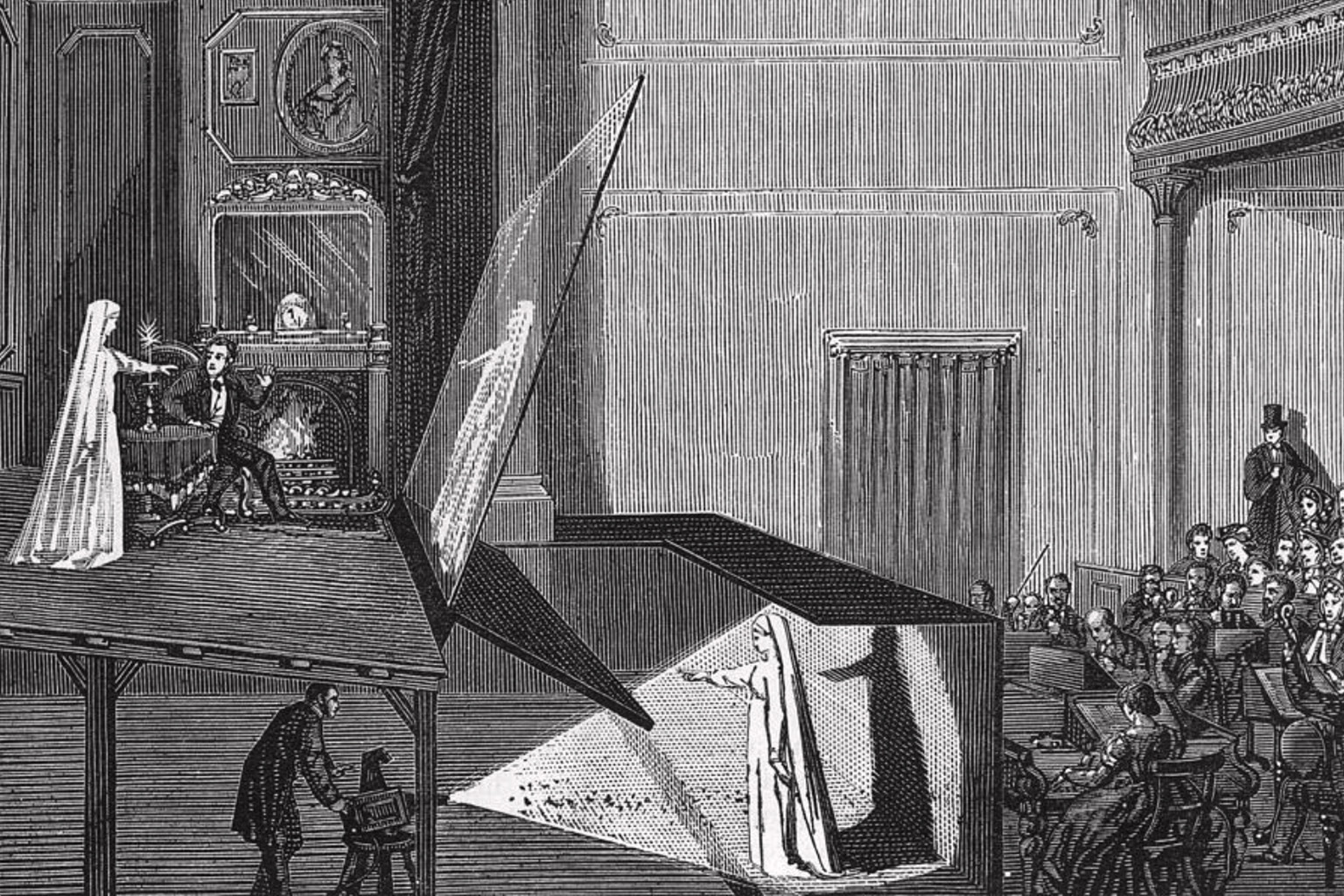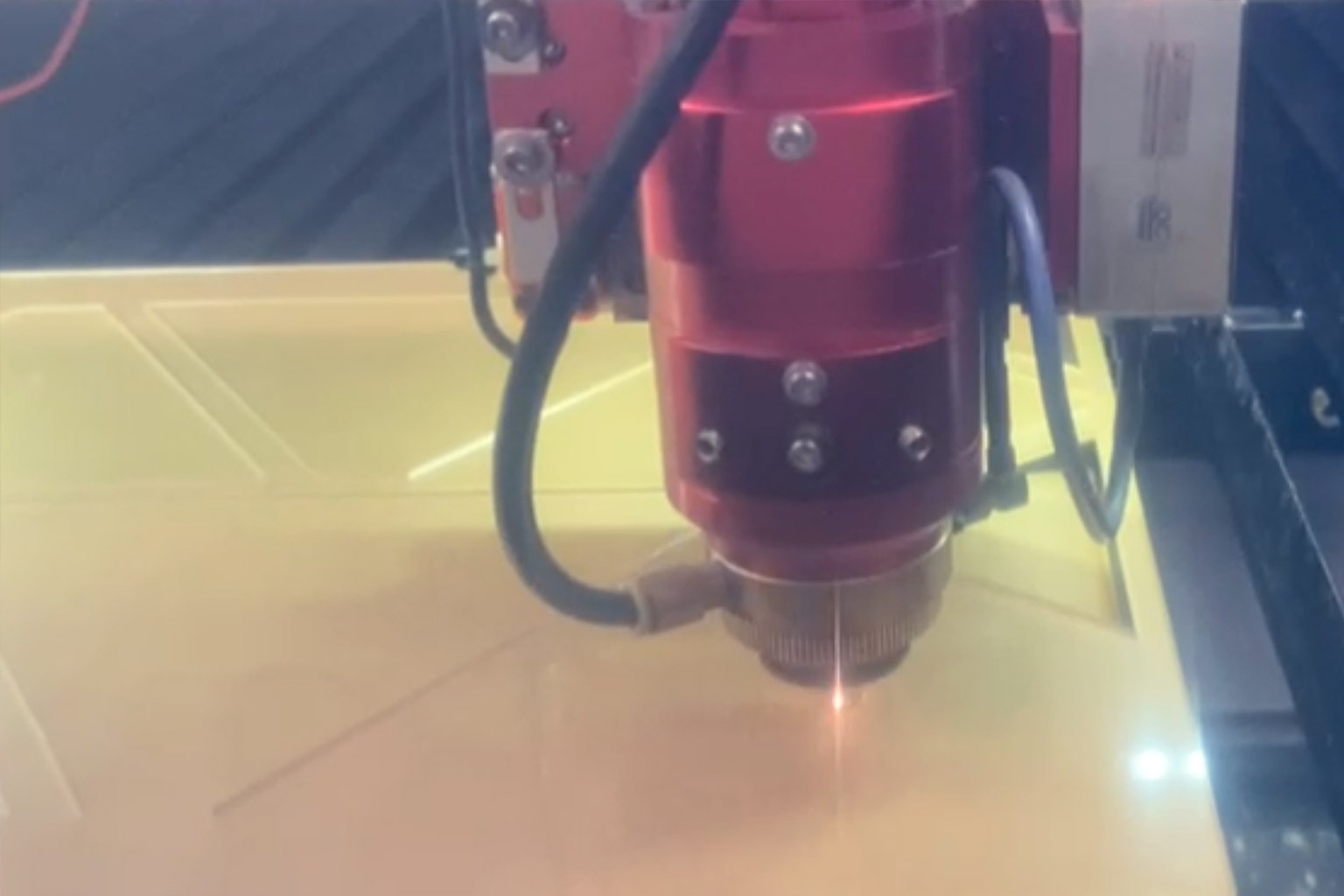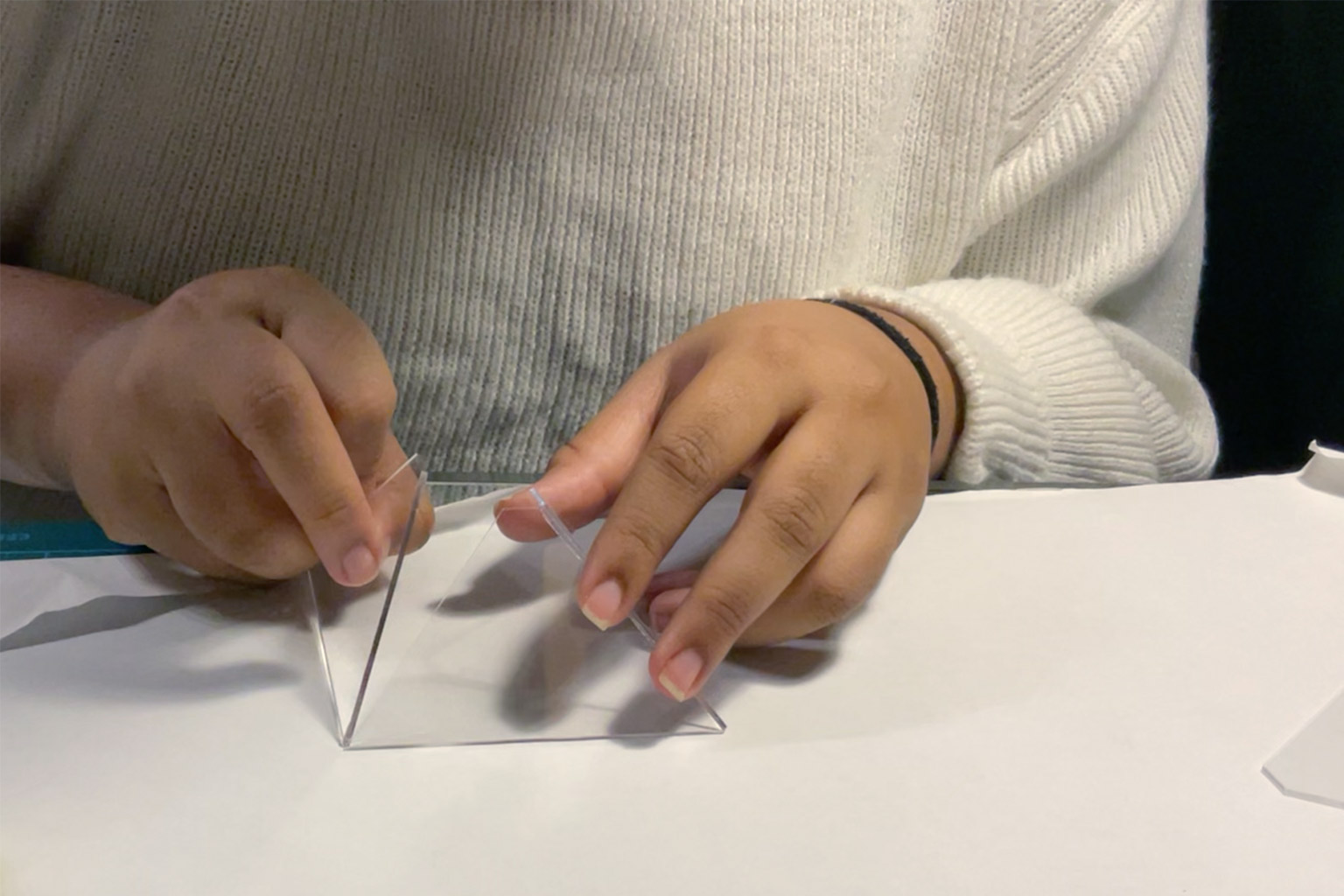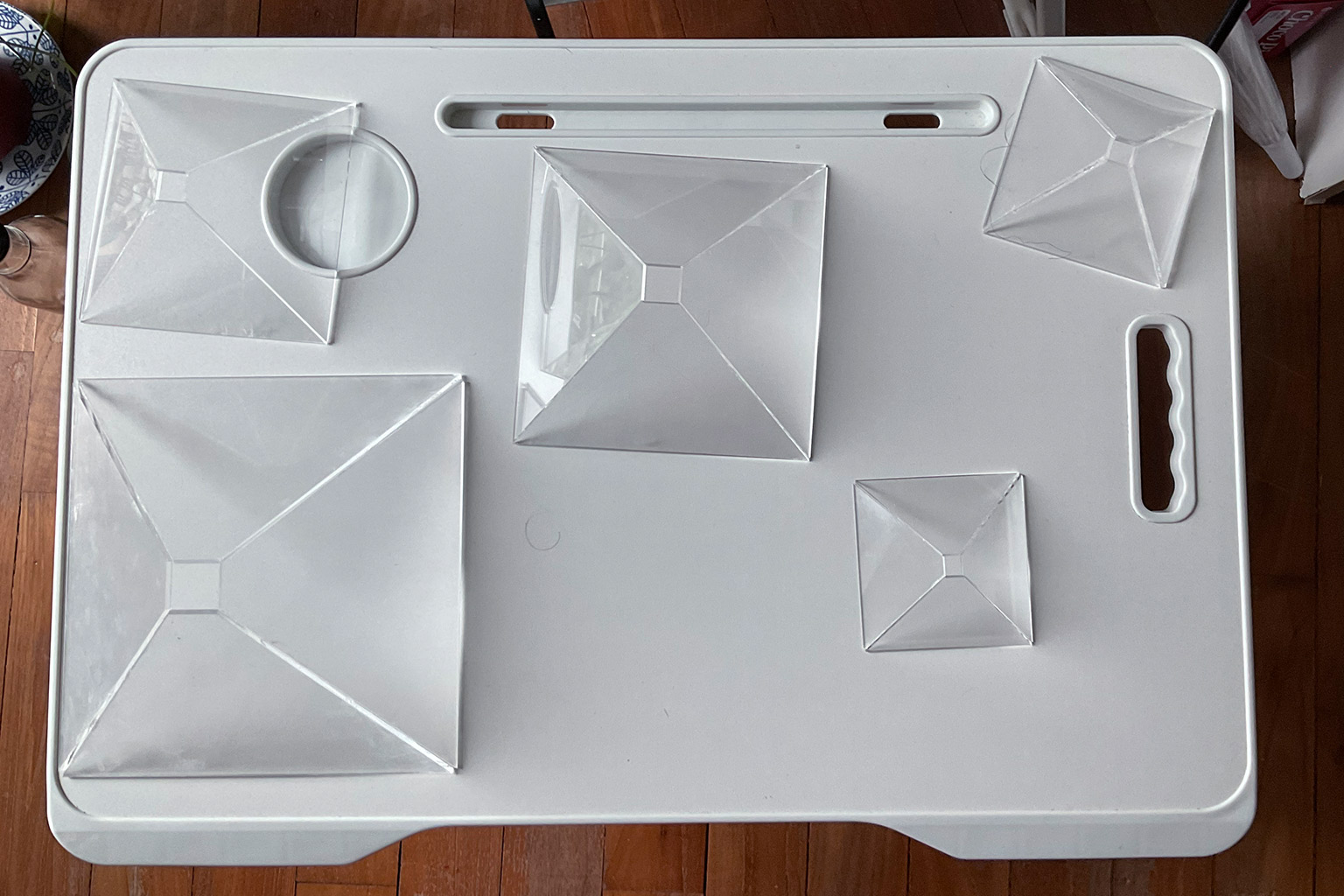
Artefact
A small-scale attempt at solving the
large-scale detriments of Diwali fireworks.
Description
Design and science go hand in hand! In order to look at how else we can celebrate Diwali, and create spectacles of light that don’t cause environmental and ecological harm, using ‘holograms’ is a possible solution and is equally awe-inducing. The festival of lights can definitely adapt to the new ages, and a fusion of technology and tradition can result in extremely fascinating visual outcomes.
This artefact consists of two parts: a series of p5.js sketches, that are elements duplicated four times around an origin (making it suitable for projection), as well as an acrylic pyramid, built out of four trapeziums with an acute angle of 45 degrees.
Pepper's Ghost
This small-scale and simple contraption uses ‘Pepper’s Ghost’ to create an illusion. (Technically, it is not an actual hologram, and only resembles one using reflections.) It was described in 1584 by Neapolitan scientist Giambattista della Porta and popularized for theatrical use by John Henry Pepper in the 1860s, hence its modern nickname "Pepper's Ghost".
In this illusion, when a real or recorded image is reflected in a transparent screen at a 45 degree angle, viewers see a reflected virtual image that seems to have depth and appear out of nowhere.

The p5.js sketches used visually resemble fireworks but are also an attempt to see how else we can play with the shape and form of a traditional firework. Now that we are not completely limited to the pyrotechnics of real fireworks, we have more freedom to explore!
Another version of a light display that I really admired was my experience on the East Coast Park during 2020-21 New Year’s, where every ship lit off flares that drifted slowly towards the sea. This version, which is more serene, was also something I was keen on exploring.
Secondary Sketch

Pyramid Process
In order to build the pyramid, I used 4mm acrylic and laser cut the trapeziums out of it. I then stuck the trapeziums with UHU glue, creating a three-dimensional object for use.









